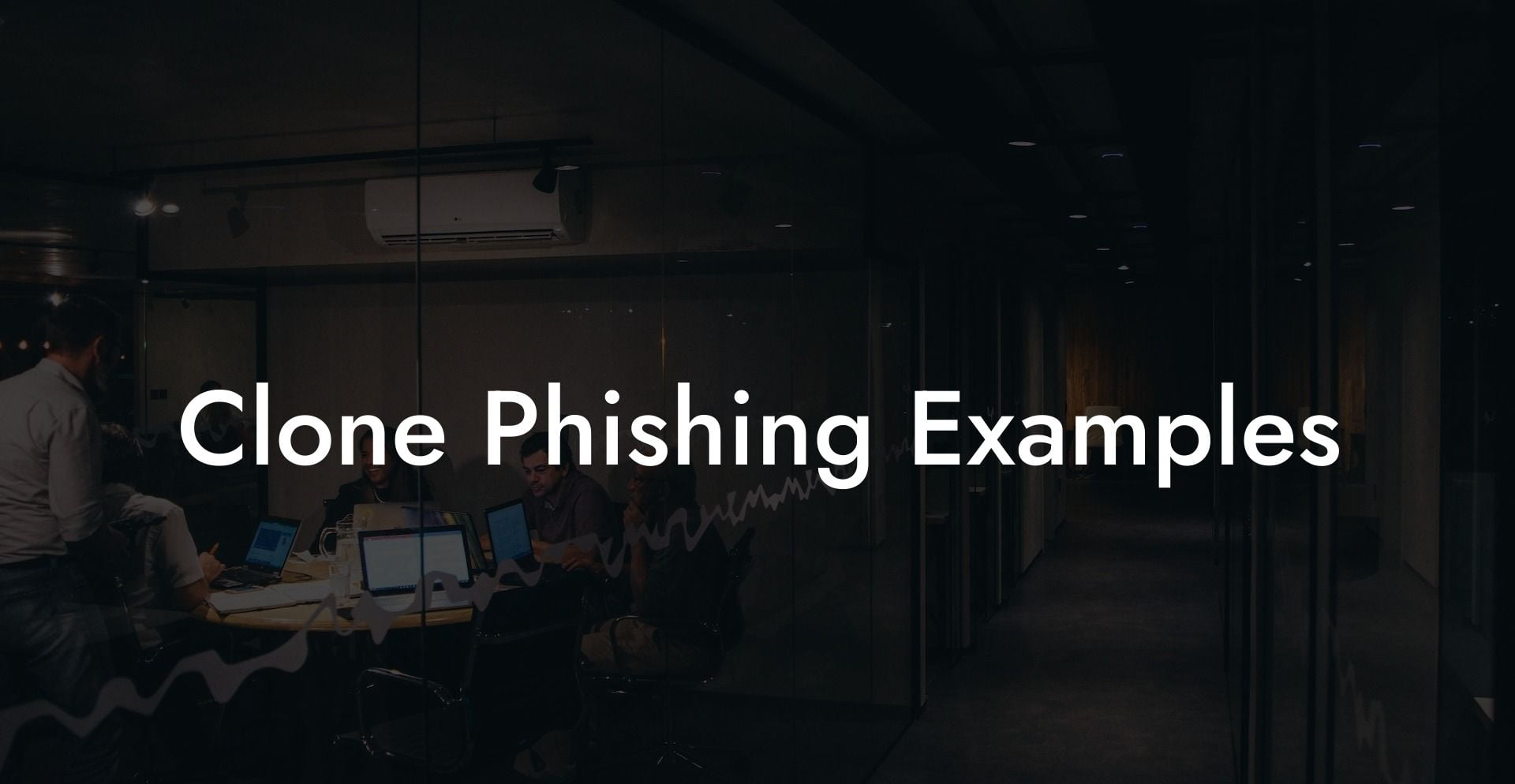The expanding digital world has brought not just advantages and conveniences but also increased risks and challenges. One of the ever-growing concerns for both individuals and organizations is the rise of phishing attacks, particularly cloned ones. In this comprehensive guide, we will uncover the deceptive concept of clone phishing, understand how it works, and explore genuine examples to better equip ourselves in the fight against this cunning cyber threat.
Clone Phishing Examples Table of Contents
Clone phishing is a sophisticated type of phishing attack that works by duplicating a legitimate and often familiar email communication, making it appear to come from the actual sender. Cybercriminals then modify the email by replacing the genuine content (such as a link or an attachment) with malicious material designed to steal sensitive data or infect a device with malware. The seemingly trustworthy source of the email and its familiar content make it challenging for the recipient to differentiate between the original and the scam.
Protect Your Data Today With a Secure Password Manager. Our Top Password Managers:
Below are real-life clone phishing examples to help you identify the strategy and learn from the incidents:
Example #1: The CEO Scam
A company's CEO receives an email from the organization's finance department, seemingly about the salary updates for staff members. The email contains an attachment, which appears to be a typical spreadsheet document, packed with all the necessary figures for the CEO to review. The content, design, and tone of the email all closely resemble those from the actual finance department. However, upon opening the attachment, the CEO unwittingly triggers the download of a trojan ransomware that locks up the organization's sensitive data, eventually leading to significant financial and reputation costs.
Example #2: Order Confirmation Trick
A frequent online shopper receives an email claiming to be from a popular eCommerce platform, confirming a recent order. The email's layout, language, and branding are all identical to the platform's legitimate emails. The email includes a link, supposedly taking the user to their order details. However, upon clicking the link, the user's login credentials and financial data become exposed to the scammers, who then drain the victim's bank account or use the information for identity theft.
Example #3: University Security Breach
A university's staff members receive an email from the IT department, alerting them of a recent security breach within the university's network. The email directs them to reset their passwords immediately by clicking on an embedded link. The communication seems urgent and professional, precisely matching the university's usual tone and message layout. However, once the staff members click on the link and input their credentials, they provide the attackers with full access to the university's internal data, including sensitive research findings and personal information of students and faculty.
By studying these clone phishing examples, we can better understand the tactics used by cybercriminals and learn how to recognize a scam. The ultimate defense against clone phishing involves a combination of awareness, skepticism, and strong cybersecurity measures on the part of both email service providers and end-users.
Arm yourself with knowledge by sharing this guide with your friends, colleagues, and family members, and help them secure their digital presence too. Don't forget to explore other informative and insightful guides on Voice Phishing, where we continue to unveil the world of cyber threats and provide invaluable advice on staying one step ahead.
Protect Your Data Today With a Secure Password Manager. Our Top Password Managers:















